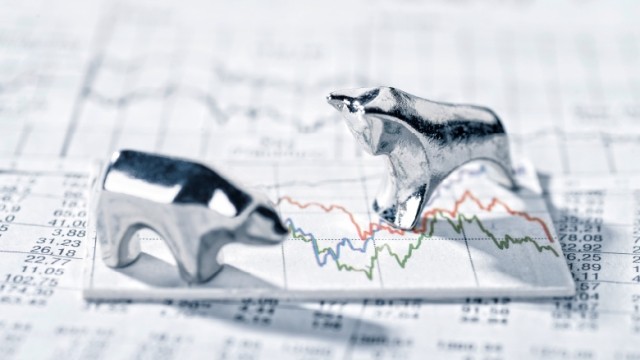What’s a bear market?

You’ve heard the old sayings: Everything is cyclical. Night follows day. What goes up must come down.
They’re as true on Wall Street as they are in nature. To understand the stock market, you need to become familiar with its cycles—most notably the transition from bull market to bear market and back again.
These cycles tend to follow certain patterns and recognizing those patterns can help you adjust your investment sails to weather whatever changes the transition may bring.
Bull vs. bear market
March saw the end of the longest-running bull market in history, spanning nearly twelve years as the economy recovered from the Great Recession. During that time, stock prices soared, and investors felt optimistic. When a bull market lasts too long, it can eventually give way to a bear market, characterized by falling stock prices and low investor confidence.
That’s where we are today. Social distancing measures across the nation are helping to curb the spread of COVID-19, but they’re also putting a strain on the economy. As more people prepare for economic challenges, confidence in the stock market has dropped, and so have stock prices.
Telltale signs of a bear market include:
- A 20 percent or more drop in stock prices within a two-month period.
- Low investor confidence.
- People selling off stocks to minimize their losses.
What should I do in a bear market?
Because the last bull market lasted so long, many younger investors are just now experiencing their first bear market. If you’re new to investing, your instincts might be telling you to panic and drop all your stocks. But that can often make the situation worse.
Here’s what to do instead:
Keep your cool. When you find yourself face to face with a bear market, the best thing to do is keep calm and avoid any sudden moves. If you panic and dump all your stocks, you’ll not only take a loss, but you won’t be able to benefit when the market starts climbing again. When in doubt, consult a financial planning expert for some sound advice. Our Investment Services team can help with that.
Play the long game. When it comes to investing money, you don’t want strong emotions like fear to influence your decisions. Focusing on long-term outcomes instead of what’s happening right now can help you steel yourself against short-term dips and ride out the bear market.
Buy with caution. A bear market is when you can pick up stocks at rock-bottom prices and watch them spring back up when the market rebounds. Even if you’re a new investor, it may be worth taking a few calculated risks. Just don’t put more money in than you’re willing to lose.
Finding the silver lining
Steady market declines can be discouraging, but the news isn’t all bad. On the plus side, bear markets are typically shorter than bull markets. Between 1900 and 2013, investors witnessed 32 bear market periods with an average length of fifteen months. The shortest lasted only three months.
Throughout the bear market, seasoned investors will be watching carefully to try to guess when stock prices will bottom out. Their goal is to take advantage of the low prices and make a hefty profit when the market rebounds. As this trading activity increases and investor confidence builds, the market can eventually transition back into a bull period.
Also worth noting: The faster stocks slide into a bear market, the shorter it tends to be. That means another bull market is bound to cycle around—and probably sooner than you realize.
If you’re looking for financial advice you can trust, our Investment Services team can help. Find out more about how we support decisions for your finances and the future.


